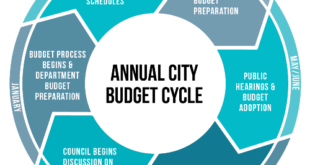By Bart Pfankuch
Every now and then inspiration strikes a writer like lightning and a nearly perfect news story is the result.
They’ll craft a piece with an engaging lead, a meaningful nut graph, intelligent exposition, on-point factual evidence, colorful imagery, telling details, unforgettable quotes and a kicker that lingers.
For some, it all comes together only once a year or even once a career.

And yet, a few writers find such success almost every time they put pen to paper or align 10 fingers on a keyboard.
Often, those top-notch writers don’t wait to think about writing until after the reporting is complete. Instead, they plan ahead, think almost constantly how to approach an assignment, create a structure for a piece and — most importantly — use the reporting process to drive their writing.
One method of planning can lead to improved writing, especially on breaking news stories or events covered by multiple reporters. I call it “Reporting to Write,” a fairly simple concept in which journalists think and focus almost constantly on the story and its structure before, during and after the reporting process.
I put this to good use in 2000 when I was the statewide general assignment reporter for a big Florida daily and drew an assignment to do a “scene piece” about tornadoes that had killed more than a dozen people.
As I drove to the scene (with the radio off and my thoughts fully on the job ahead) I wondered how to approach the reporting. The fact the funnels blew in at night on Valentine’s Day were both sure to be touched on by the two other breaking news reporters on our team.
I began to see debris scattered about fields and people picking through the wreckage and suddenly it hit me: One terrifying element of every tornado is how it exposes the possessions and lives of its victims for all to see.
I settled on a plan to tell the stories of some of the victims by focusing solely on their scattered possessions and confirming those assumptions by talking to surviving family members or neighbors.
I found and recorded the titles of children’s books owned by a toddler who died; I examined trophies scattered about a home where a teenaged athlete had been injured; and I found record albums and took note of the artists beloved by a middle-aged musician who was killed. I didn’t dilute my effort by attending press conferences or talking to cops or firefighters or interviewing numerous survivors who all told much the same story.
Once I had an opening sentence, the story nearly wrote itself. In fact, after my computer crashed on the way to use the modem in the public library where I wrote, I was able to rewrite the entire piece in 15 minutes. My editors loved the piece and I was home by 5 p.m. that day.
Here are some basics about Reporting to Write that can help you become a better storyteller and get you home in time to make dinner.
- Consider an “angle” or approach to the organization of the story early in the reporting process. Talking to editors, colleagues, sources or even yourself can help reveal whether you’re on the right track.
- Before settling on an angle, run the premise past a number of knowledgeable people or primary sources with different viewpoints to see if you’ve got it right. Once confident, pursue the angle or approach with vigor.
- Maintain a constant focus on the critical elements of the story while in the field or on the phone. You should always be on the hunt for the lead, great quotes, colorful characters, transitions, telling details and a kicker. Always think story, story, story – how does this work into my story structure and what do I need to pull this off?
- Pursue your approach with passion, curiosity, energy and watchful eyes and ears.
- Always write down concrete details and specific facts or descriptions that add color and spice to the copy in order to avoid errors. Key facts and news tidbits can be worked into the overall structure.
- Don’t be afraid to write a passage or portion of the story while in the field or between interviews. The best time to craft compelling copy is when the reporting is fresh.
- While reporting, sketch an outline or highlight elements of your notes that might serve as an anecdote, a lively detail, a transition or a kicker to make them easy to find later.
- Once you know the premise is solid, free yourself to write with authority, command over language and with feeling and voice.
- Remember to consider a “to be sure” or contrarian paragraph if necessary, a quick nod to the reader that the angle you’re taking isn’t the only possible angle, just the one you’re pursuing in this piece.
- Important caveats: Do not bend the reporting to meet your premise or mistakenly pursue a false narrative. Don’t create a sentiment that doesn’t exist. Don’t write to please a source or your editor. Remember that this technique is not foolproof or perfect for every story, and understand that sometimes you have to blow up your premise or structure and go back to straight news to make deadline and be accurate and fair.
 Nevada Press Association The best in Nevada journalism since 1924
Nevada Press Association The best in Nevada journalism since 1924




